olanzapine (oral)
Pronunciation: oh LANZ a peen
Brand: ZyPREXA, ZyPREXA Zydis
Olanzapine 10 mg-APO
round, white, imprinted with APO, OLA 10
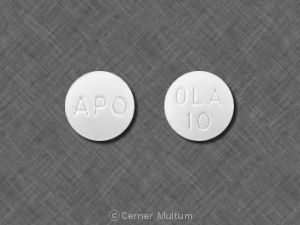
Olanzapine 10 mg-TEV
round, white, imprinted with TEVA, 5770

Olanzapine 15 mg-APO
oval, blue, imprinted with APO, OLA 15
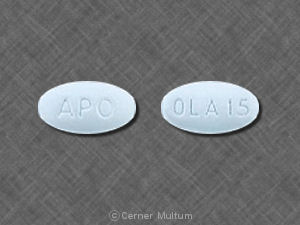
Olanzapine 15 mg-TEV
oblong, blue, imprinted with TEVA, 5771

Olanzapine 2.5 mg-APO
round, white, imprinted with APO, OLA 2.5

Olanzapine 2.5 mg-TEV
round, white, imprinted with TEVA, 5767
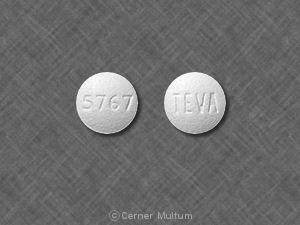
Olanzapine 20 mg-APO
oval, pink, imprinted with APO, OLA 20
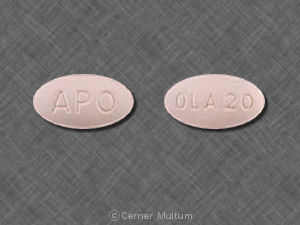
Olanzapine 20 mg-TEV
oval, white, imprinted with R 20, 0168

Olanzapine 5 mg-APO
round, white, imprinted with APO, OLA 5
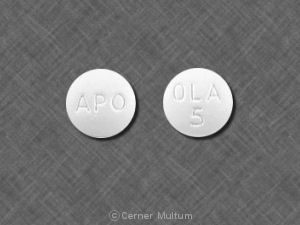
Olanzapine 5 mg-TEV
round, white, imprinted with TEVA, 5768
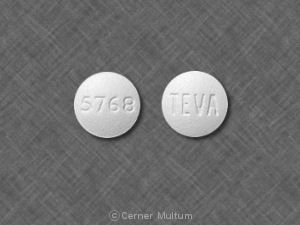
Olanzapine 7.5 mg-APO
round, white, imprinted with APO, OLA 7.5

Olanzapine 7.5 mg-TEV
round, white, imprinted with TEVA, 5769
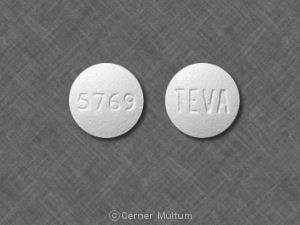
Olanzapine ODT 10 mg-APO
round, yellow, imprinted with APO, OL 10
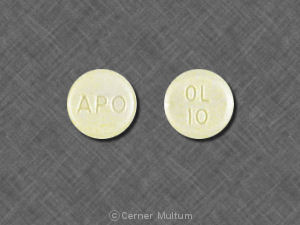
Olanzapine ODT 15 mg-APO
round, yellow, imprinted with APO, OL 15
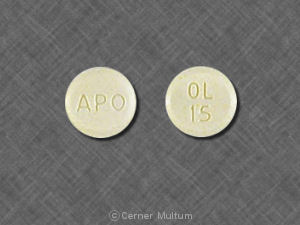
Olanzapine ODT 20 mg-APO
round, yellow, imprinted with APO, OL 20
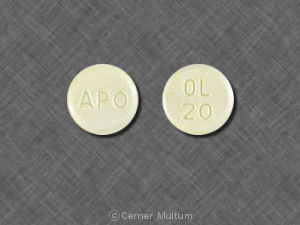
Olanzapine ODT 5 mg-APO
round, yellow, imprinted with APO, OL 5

Zyprexa 10 mg
round, white, imprinted with LILLY 4117

Zyprexa 15 mg
oval, blue, imprinted with LILLY 4415
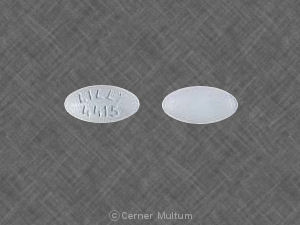
Zyprexa 2.5 mg
round, white, imprinted with LILLY 4112

Zyprexa 20 mg
oval, pink, imprinted with LILLY 4420

Zyprexa 5 mg
round, white, imprinted with LILLY 4115

Zyprexa 7.5 mg
round, white, imprinted with LILLY 4116

Zyprexa Zydis 10 mg
round, yellow, imprinted with 10

Zyprexa Zydis 5 mg
round, yellow, imprinted with 5

What is the most important information I should know about olanzapine?
Olanzapine is not approved for use in psychotic conditions related to dementia. Olanzapine may increase the risk of death in older adults with dementia-related conditions.
What is olanzapine?
Olanzapine is an antipsychotic medication that affects chemicals in the brain.
Olanzapine is used to treat the symptoms of psychotic conditions such as schizophrenia and bipolar disorder (manic depression) in adults and children who are at least 13 years old. Olanzapine is sometimes used together with other antipsychotic medications or antidepressants.
Olanzapine may also be used for purposes not listed in this medication guide.
What should I discuss with my healthcare provider before taking olanzapine?
Olanzapine is not approved for use in psychotic conditions related to dementia. Olanzapine may increase the risk of death in older adults with dementia-related conditions.
You should not take olanzapine if you are allergic to it.
Long-term use of olanzapine can cause a serious movement disorder that may not be reversible. Symptoms include uncontrollable muscle movements of your lips, tongue, eyes, face, arms, or legs. The longer you take olanzapine, the more likely you are to develop this movement disorder. The risk of this side effect is higher in women and older adults.
To make sure olanzapine is safe for you, tell your doctor if you have ever had:
- liver disease;
- heart disease, high or low blood pressure;
- low white blood cell (WBC) counts;
- high cholesterol or triglycerides;
- heart failure, heart attack, or stroke;
- breast cancer;
- seizures or epilepsy;
- diabetes;
- an enlarged prostate or difficulty urinating;
- bowel problems; or
- narrow-angle glaucoma.
Tell your doctor if you are pregnant or plan to become pregnant while using this medication.
Taking antipsychotic medication during the last 3 months of pregnancy may cause problems in the newborn, such as withdrawal symptoms, breathing problems, feeding problems, fussiness, tremors, and limp or stiff muscles. However, you may have withdrawal symptoms or other problems if you stop taking your medicine during pregnancy. If you become pregnant while taking olanzapine, do not stop taking it without your doctor's advice.
Olanzapine can pass into breast milk and may harm a nursing baby. You should not breast-feed while using olanzapine.
The olanzapine orally disintegrating tablet (Zyprexa Zydis) may contain phenylalanine. Talk to your doctor before using this form of olanzapine if you have phenylketonuria (PKU).
How should I take olanzapine?
Follow all directions on your prescription label. Your doctor may occasionally change your dose to make sure you get the best results. Do not take this medicine in larger or smaller amounts or for longer than recommended.
Olanzapine can be taken with or without food.
Olanzapine is usually taken once a day. Olanzapine may be only part of a complete program of treatment that also includes counseling and other psychological support programs. Follow your doctor's instructions.
To take olanzapine orally disintegrating tablet (Zyprexa Zydis):
- Keep the tablet in its original container until you are ready to take it.
- Using dry hands, place the tablet in your mouth. It will begin to dissolve right away.
- Do not swallow the tablet whole. Allow it to dissolve in your mouth without chewing.
- Swallow several times as the tablet dissolves. If desired, you may drink liquid to help swallow the dissolved tablet.
Call your doctor if your symptoms do not improve, or if they get worse while using olanzapine.
Do not stop using olanzapine suddenly, even if you feel fine. Stopping suddenly may cause serious side effects.
Olanzapine can cause high blood sugar (hyperglycemia). If you are diabetic, check your blood sugar levels on a regular basis while you are taking olanzapine.
You may gain weight or have high cholesterol and triglycerides (types of fat) while taking this medicine, especially if you are a teenager. Your blood may need to be tested often. Visit your doctor regularly.
If you are taking a combination of drugs, use all medications as directed by your doctor. Read the medication guide or patient instructions provided with each medication. Do not change your doses or medication schedule without your doctor's advice.
Store at room temperature away from moisture, heat, and light.
What happens if I miss a dose?
Take the missed dose as soon as you remember. Skip the missed dose if it is almost time for your next scheduled dose. Do not take extra medicine to make up the missed dose.
What happens if I overdose?
Seek emergency medical attention or call the Poison Help line at 1-800-222-1222.
Overdose symptoms may include drowsiness, agitation, aggression, slurred speech, confusion, increased heart rate, jerky or uncontrolled muscle movements, trouble breathing, or fainting.
What should I avoid while taking olanzapine?
Olanzapine may impair your thinking or reactions. Be careful if you drive or do anything that requires you to be alert.
Avoid getting up too fast from a sitting or lying position, or you may feel dizzy. Dizziness or severe drowsiness can cause falls, fractures, or other injuries.
Avoid drinking alcohol. Dangerous side effects could occur.
Avoid becoming overheated or dehydrated. Drink plenty of fluids, especially in hot weather and during exercise. It is easier to become dangerously overheated and dehydrated while you are taking olanzapine.
What are the possible side effects of olanzapine?
Get emergency medical help if you have signs of an allergic reaction: hives; difficulty breathing; swelling of your face, lips, tongue, or throat.
Seek medical treatment if you have symptoms of a serious drug reaction that can affect many parts of your body. Symptoms may include: skin rash, fever, swollen glands, flu-like symptoms, unusual bruising, or jaundice (yellowing of your skin or eyes).
Call your doctor at once if you have:
- uncontrolled muscle movements in your face (chewing, lip smacking, frowning, tongue movement, blinking or eye movement);
- trouble speaking or swallowing;
- swelling in your hands or feet;
- confusion, unusual thoughts or behavior, hallucinations, or thoughts about hurting yourself;
- sudden weakness or ill feeling, fever, chills, sore throat, swollen gums, painful mouth sores, pain when swallowing, skin sores, cold or flu symptoms, cough;
- signs of dehydration --feeling very thirsty or hot, being unable to urinate, heavy sweating, or hot and dry skin;
- liver problems --upper stomach pain, itching, loss of appetite, dark urine, clay-colored stools, jaundice (yellowing of the skin or eyes);
- high blood sugar --increased thirst, increased urination, hunger, dry mouth, fruity breath odor, drowsiness, dry skin, blurred vision, weight loss; or
- severe nervous system reaction --very stiff (rigid) muscles, high fever, sweating, confusion, fast or uneven heartbeats, tremors, feeling like you might pass out.
Common side effects may include:
- weight gain (more likely in teenagers), increased appetite;
- headache, dizziness, drowsiness, feeling tired or restless;
- problems with speech or memory;
- tremors or shaking, numbness or tingly feeling;
- changes in personality;
- dry mouth, or increased salivation;
- stomach pain, constipation; or
- pain in your arms or legs.
This is not a complete list of side effects and others may occur. Call your doctor for medical advice about side effects. You may report side effects to FDA at 1-800-FDA-1088.
What other drugs will affect olanzapine?
Taking olanzapine with other drugs that make you sleepy or slow your breathing can cause dangerous or life-threatening side effects. Ask your doctor before taking a sleeping pill, narcotic pain medicine, prescription cough medicine, a muscle relaxer, or medicine for anxiety, depression, or seizures.
Other drugs may interact with olanzapine, including prescription and over-the-counter medicines, vitamins, and herbal products. Tell your doctor about all your current medicines and any medicine you start or stop using.
Remember, keep this and all other medicines out of the reach of children, never share your medicines with others, and use this medication only for the indication prescribed.
Every effort has been made to ensure that the information provided by Cerner Multum, Inc. ('Multum') is accurate, up-to-date, and complete, but no guarantee is made to that effect. Drug information contained herein may be time sensitive. Multum information has been compiled for use by healthcare practitioners and consumers in the United States and therefore Multum does not warrant that uses outside of the United States are appropriate, unless specifically indicated otherwise. Multum's drug information does not endorse drugs, diagnose patients or recommend therapy. Multum's drug information is an informational resource designed to assist licensed healthcare practitioners in caring for their patients and/or to serve consumers viewing this service as a supplement to, and not a substitute for, the expertise, skill, knowledge and judgment of healthcare practitioners. The absence of a warning for a given drug or drug combination in no way should be construed to indicate that the drug or drug combination is safe, effective or appropriate for any given patient. Multum does not assume any responsibility for any aspect of healthcare administered with the aid of information Multum provides. The information contained herein is not intended to cover all possible uses, directions, precautions, warnings, drug interactions, allergic reactions, or adverse effects. If you have questions about the drugs you are taking, check with your doctor, nurse or pharmacist.
Copyright 1996-2018 Cerner Multum, Inc. Version: 15.03. Revision date: 9/27/2017.